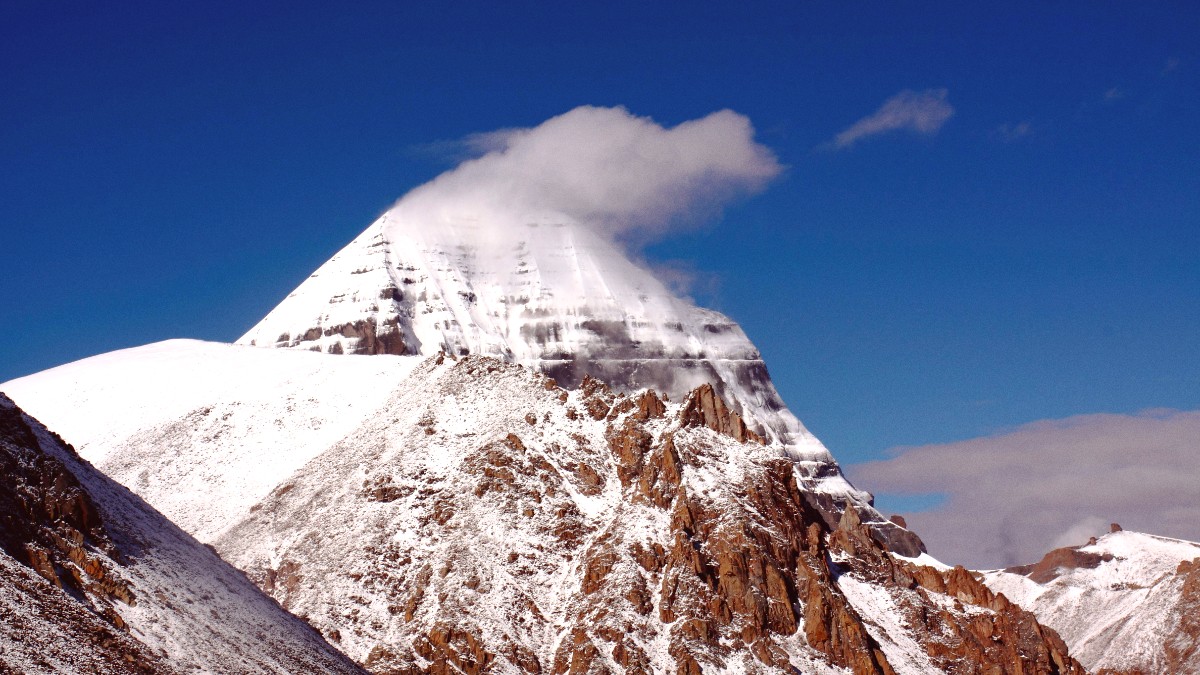
Tibet, China
The journey to Mount Kailash unfolds amidst a landscape of profound spiritual significance. The region's natural grandeur forms a powerful backdrop for ancient pilgrimage traditions.
Every step on this path connects travelers with millennia of devotion and breathtaking high-altitude scenery.
This sacred lake stands near Darchen, on the path to Kailash. A larger, multi-day kora can be done around Lake Manasarovar (about 100 km), but most tours only visit the shore for views and a brief walk. Find Tibetan Tours on GetYourGuide.
This mountain is the ultimate spiritual site for millions, drawing devotees from various faiths.
A holy lake, revered for its cleansing properties and spiritual power.
Numerous small stupas (chortens), prayer walls (mani walls), and rock carvings adorn the kora route, often left as offerings by pilgrims.
The entire kora route holds sacred power, marked by generations of footsteps and prayers.
Small monasteries offer quiet spaces for reflection and local religious observation.
The rugged landscape presents breathtaking natural marvels. The region's beauty lies in its raw, untamed wilderness.
A saltwater lake adjacent to Lake Manasarovar, believed to be the abode of demons. It contrasts sharply with the sacred Manasarovar, both in color and symbolism.
The valley leading to the kora presents panoramic views of the Transhimalaya and the surrounding plains.
The vast, majestic mountain ranges are visible throughout the journey to Kailash, giving a constant backdrop of immense scale.
You encounter opportunities to spot high-altitude wildlife during drives to and from Kailash, including wild yaks, Tibetan antelopes, kiang, and various bird species (e.g., bar-headed geese near lakes). This appears as opportunistic viewing rather than a dedicated safari experience.
The distinctive geological formations of the Kailash range, including striking sedimentary rock layers, are a visual marvel. They tell a story of ancient forces shaping the land.
Lake Manasarovar and Rakshas Tal comprise the two prominent lakes in the region, each with its distinct character. The Sutlej River, a major waterway, originates near Kailash, a source of life for vast regions downstream.
A small monastery perched on a hill overlooking Lake Manasarovar, presenting fantastic views of the lake and Kailash in the distance, especially at sunrise or sunset.
Located west of Kailash, these hot springs are known for their therapeutic properties and meditation caves associated with Guru Rinpoche.
Tsaparang and Donggar Monasteries, part of the Guge Kingdom ruins, lie further afield, presenting incredible ancient murals and insights into a lost kingdom.
Preparation for sightseeing in the Kailash region extends beyond simply having permits. The extreme environment and sacred nature of the sites make certain specific considerations for a rewarding visit.
Your packing list greatly influences your comfort and ability to fully appreciate the attractions.
Maintaining your health and hydration levels holds importance for enjoying the sights at extreme altitudes.
Honoring local customs greatly enriches your experience and shows deference to the sacred sites.
Other considerations for a smooth and rewarding sightseeing experience.
The Kailash region focuses more on living culture and pilgrimage than formal institutions, but significant insights await in the larger Tibetan cities.
Very limited or non-existent in the immediate Kailash region. Comprehensive museums, like the Tibet Museum in Lhasa, offer broader historical and cultural context.
Monasteries along the kora (Dirapuk, Zutulpuk) and around Lake Manasarovar serve as the main cultural institutions, presenting insights into Tibetan Buddhist practices and monastic life.
Within the monasteries, you may find ancient thangkas, statues, and ritual objects, each holding cultural and artistic value, integral to the living traditions.
The former winter palace of the Dalai Lamas, now a museum and UNESCO World Heritage site. A symbol of Tibet.
Explore Potala Palace ToursThe most sacred temple in Tibet, drawing pilgrims from across the region. Situated on Barkhor Street.
Discover Jokhang TempleThe former summer palace and park of the Dalai Lamas, offering beautiful gardens and traditional Tibetan architecture.
Visit NorbulingkaOne of Tibet's "Great Three" Gelug university monasteries, once the world's largest monastery.
See Drepung MonasteryFamous for its unique monk debates held in the courtyard, offering a lively cultural spectacle.
Experience Sera MonasteryIn Lhasa, museums provide comprehensive insights into Tibetan history and culture.
Observe specific customs when visiting monasteries to show appropriate deference.
The majesty of the Kailash region unfolds at every turn, presenting both spiritual enrichment and natural splendor.
Embrace the unique blend of adventure and devotion that this sacred land provides.
Effective planning significantly influences your sightseeing enjoyment, especially in a region with such unique accessibility and environmental considerations.
Tibet is a restricted region, and foreign visitors require several permits for entry and travel within. Your tour operator manages these.
Independent travel is not permitted for foreigners in the Kailash region. You must be part of an organized tour with a licensed guide and driver.
The prime seasons for visiting Kailash align with favorable weather and clear skies.
Always ask permission before photographing local people, especially those involved in religious practices. Respect their privacy.
Listen to your body and your guide. Do not push yourself if symptoms appear.
The local currency is Chinese Yuan (CNY). Carry small denominations for purchases in remote areas.
Mobile network coverage is limited. Satellite phones may be beneficial for emergencies.
Travel insurance covering high-altitude trekking and emergency evacuation holds great importance.